The development of formations in football has been one of the most fascinating aspects to watch on the pitch. After more many years, playing with a back 3 formations have come back into fashion in the current soccer landscape. Antonio Conte has used a back 3 formation first at Juventus using a 3-5-2 formation. Then he conquered English football with Chelsea using a concrete 3-4-3. He also used a 3 – 4 – 3 formation in his time in Tottenham. Even Pep Guardiola has utilized some version of a defensive trio in each of his three managerial jobs to date. Exactly like the 4-2-3-1 took over the sport during the last decade, it feels like everyone’s getting in on the back three. Coaches may use it as their main playing formation or under specific circumstances as a strategic alternative.
With football evolving to the point where defenders can be the initiators of attacking moves the back three has made a comeback. Thanks to the numerical advantage it benefits the deepest of deep-lying playmakers: the modern center-back.
In the last few years more and more teams are playing with a back 3 either with 2 forwards (1-3-5-2) or 3 in front (1-3-4-3) or even some other variations that creates more depth depending on the quality of a team’s players (1-3-4-1-2, 1-3-1-4-2 etc). Inter Milan’s Antonio Conte has made a name for himself by operating with that system. It worked in the Premier League with Chelsea as he claimed the title in 2017. Inter Milan is not the only team in Italy using a back three formation. Atalanta is another team using the specific formation with great success.
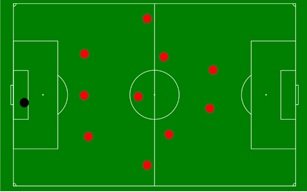
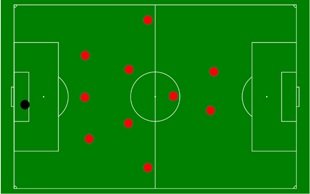
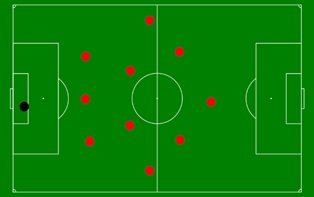
The fundamental of 3 – 5 – 2
The 3-5-2 is an extremely versatile formation. It modifies itself throughout the course of a game forming a powerful defense and offense. Depending on the ball position and the players the back line can be 3, 4 or 5.
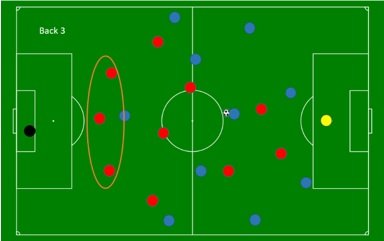
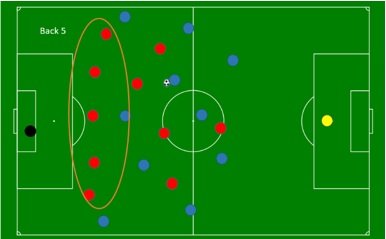
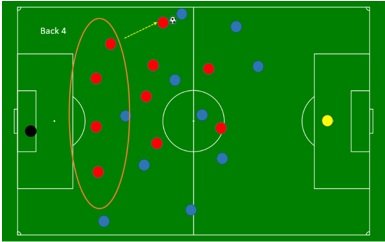
The keys to a successful 3-5-2 formation are a dominant and cohesive trio of center backs, versatile players to play on the outside of the midfield, and a pair of dynamic strikers. The best professional example of a team that uses the 3-5-2 is Juventus, one of the top Italian teams in Europe.
Communication between the three Center Backs is essential. In most cases, the three central defenders need to move as a unit. The trio must be aware of how much space is between them and they must maintain a linear shape to prevent attackers from making runs behind them. However in counter attacking situations if an opposing attacker cuts inside the closest Center Back must quickly realize this and pressure the ball while the other two cover the space behind him.
In addition to traditional skills required from central defenders a back 4 formations, such as phenomenal positional awareness, strong tackling, and the ability to win the ball in the air, Center Backs in a 3-5-2 formation require more speed. This is because there are no traditional Left and Right Backs to cover the wide areas.
The three Center Back strategy that the 3-5-2 utilizes is particularly successful against teams that play a formation with two Strikers, such as the 4-4-2. The reason being the two opposing forwards are now going head to head with an additional Center Back. Many forwards are not accustomed to this because most teams play a formation that only features two central defenders. On the other hand, when a team plays with only one Striker, the three central defenders can find themselves all marking the same man.
The outside midfielders in a 3-5-2 formation are another key component to the formation. Instead of being referred to as Left and Right Midfielders the players on the outside of the 5-player midfield are categorized as the Left and Right Wingback, or LWB and RWB. In a 3-5-2 these players serve as a hybrid between the traditional Fullbacks and outside midfielders. When their team has possession the Wingbacks take up the responsibilities of an outside midfielder and when their team is defending they drop in line with the central defenders.
Because of the constant and fluid transition that Wingbacks make the 3-5-2 essentially becomes a 5-3-2 while in defense. The Wingbacks join the center backs to form a singular back line and the CAM drops further into the midfield. From there, the CAM and the remaining two central midfielders move from across the field in unison to pressure the ball and protect the backline.
The wingbacks should completed the duties of two separate positions and they must be extremely versatile and fit. In addition to their defensive duties, Wingbacks often push as far up the field as the team’s forwards in order to provide width, support, and deliver crosses. The Wingback position in a 3-5-2 formation is often occupied by either a Fullback who has superior ball control and passing or an outside midfielder who can contribute on the defensive end of the field.
The two strikers in the 3-5-2 formation serve as the team’s primary goal scoring threats. They combine with each other and central midfielders, mainly the CAM, to pick apart the opposition’s defense. The two strikers should also be looking to receive through balls by making runs behind the opposition’s back line. It’s always a positive to have at least one of these two players possess the ability to play as a target man. Meaning he has the size and strength to win crosses and long balls while holding off defenders. This allows the Wingbacks, the three-man central midfield, and the other Striker to join the attack and make themselves available to receive the ball.
History
Playing with back 3 popular in the 1970s and ’80s for similar reasons. With most sides fielding two true strikers, it was popular to play three central defenders in order to create a “spare man” at the back. There would be two stoppers tasked with diligently marking the opposing forwards, and one sweeper, or libero, afforded the freedom to sit behind the defensive line as a form of insurance should a striker break beyond his marker.
Evolution of the 3-4-3
The 3-4-3 formation could be considered a relatively new formation however, it”s precursor is the “WM” formation that was first used in England in the 1920″s by Arsenal manager Herbert Chapman. The WM was later adopted by many teams in the English game.

The “WM” formation was named WM as a result of the 3-2-2-3 shape, created to address a change in the offside law in 1925-26 season. Before 1925-26 a forward needed three opposition players between him and the goal to be onside. The rule introduced in 1925 decreased 3 opposing players to 2. This meant forwards needed two opposition players between them and the goal which immediately led to an increase of goals scored.
Most teams pre 1925 played a 2-3-5 formation and the “Third Back” was introduced by Herbert Chapman to create the WM formation. This system was adopted by the England National Team until the infamous 6-3 defeat by Hungary in 1953 that exposed the tactical and technical deficiencies of the side against the Hungarians.
Back Three Returns
As Jonathan Wilson points out in his excellent book “Inverting the Pyramid”, tactical changes in football followed a trend of adding more players to the defensive line. The back three evolved to a back four and then to a back four with a libero sweeping in behind the defensive unit.
A back three was successfully re-introduced by Argentina Manager Carlos Bilardo. He led his country to the 1986 FIFA World Cup playing a 3-5-2 system, and devised the formation to include playmaker Diego Maradonna into a defensively focused approach.
Bilardo adopted the back three because he felt that wingers were not as relevant in systems at that time, becoming wide midfielders rather than attackers. He switched his full backs into midfielders as this provided support and security in advanced areas of the pitch where Maradona could then operate.
Van Gaal
Van Gaal progressed the concept of facilitating a playmaker within the team by changing his Ajax side from a 4-3-3 to a 3-4-3 system. In Van Gaal”s approach the defensive three marked zonally, the midfield four played in a diamond shape, and width was provided by two wingers on either side of the centre forward.
The Dutch manager changed Ajax”s back 4 defensive line into a back 3 by pushing one of the two centre backs into the holding midfield role to dictate play from deep. The holding midfielder was key to Van Gaal”s formation as he recognized his No.10 had become too constrained by the opposition to control the game.
In the 1995 Champions League Final, Frank Rijkaard played the holding midfield role and went on to provide the assist for Patrick Kluivert”s winning goal as Ajax defeated AC Milan 1-0

Modern Day 3-4-3
The 3-4-3 has enjoyed a resurgence in recent years with a number of professional coaches and managers adopting the formation, both internationally and in domestic leagues.
Marcelo Bielsa
The revered Argentinian Coach, Marcelo Bielsa, experimented with the formation at Newell”s Old Boys in the early 1990″s. He guided the side to the Argentine Primera División title and the 1992 Copa Libertadores Final, in which they lost on penalties to Brazilian side São Paulo.
As a result of his meticulous preparation and obsessive analysis of the game, Bielsa is affectionately nicknamed “El Loco”. In implementing his philosophy at an International level he gave Chile a style, identity, and philosophy which was preserved by his protégé Jorge Sampaoli and continues to this day.
Bielsa describes his philosophy in four terms; permanent focus, mobility, rotation, and “repeitización” – which is a musical expression to describe the process of playing a piece without having practiced it first! This fluid approach to the game led Bielsa to again utilize a 3-4-3 at Athletic Bilbao, with his players being encouraged to be flexible and change formation mid-game according to the opposition”s shape.
This culminated in Bielsa”s side beating Manchester United 5-3 over two legs in the last 16 of the 2012 Europa League, they pressed all over the pitch and attacked as a team to outclass the Premier League giants.
Jorge Sampaoli
Sampaoli is described as a “Bielsista” as he is an advocate of setting his teams up in a 3-4-3 and deploying a high pressing game to regain possession and attack at every opportunity. This was in line with the stylistic principles laid down by fellow Argentine Marcelo Bielsa.
Jorge Sampaoli”s impact at Chilean club Universidad de Chile did not go unnoticed and he replaced Claudio Borghi as the Chile National Team Coach in 2012, as the country was keen to continue the themes introduced by Bielsa.
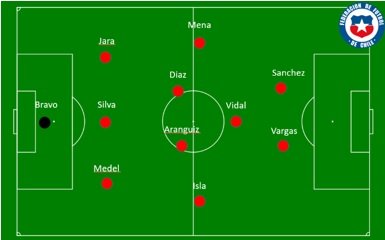
Results improved and the team entered the 2014 World Cup full of confidence. Chile faced World Cup holders Spain in the group stages and the 3-4-3 approach dominated the Spanish as Chile was 2-0 up before halftime, knocking the holders out of the tournament.
The methods of Sampaoli and Bielsa, and their 3-4-3 approach, were justified in 2015 when Sampaoli”s side won the Copa América for the first time defeating Argentina in the final.
Pep Guardiola
One of the most successful “Bielsista” coaches is Pep Guardiola. Anecdotally, before Guardiola entered football management, he flew to Rosario in Argentina, to seek inspiration and advice from “El Loco”. The football pilgrimage involved the two coaches discussing football, tactics, and philosophies for over 11 hours and resulted in the formation of mutual respect and admiration.
The future Manchester City Manager is renowned for being one of the game’s great thinkers and regularly adapts his team’s formation. At times he changes his formation mid-game in order to add tactical flexibility, unpredictability and expose potential weaknesses in the opposition system. It has been reported that Guardiola prefers using the 3-4-3 system against opposition teams with two strikers, in order to create a 3v2 overload in the defensive third to secure possession and play out, this was evidenced when his Barcelona side defeated Villarreal 5-0 using this approach.
However, in the 2015 Champions League Semi-Final first leg against his old club Barcelona, Guardiola set his Bayern Munich team up in a 3-4-3 system against Barcelona”s 4-3-3 formation; effectively going man for man all over the pitch as his wide midfielders locked on to Barca”s full backs and a three-man defense was tasked with man-marking Luis Suarez, Messi and Neymar.
Champions League Semi-final 2015 against Barcelona in Nuevo Campo.
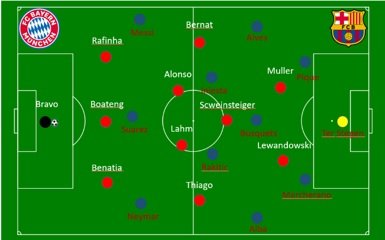
Unfortunately for Guardiola and Munich, the tie finished 3-0 to Barcelona, although all of the goals were scored in the final 13 minutes. Nevertheless, the approach by Guardiola demonstrated his innovative thinking in what was unquestionably a difficult task; namely, to try to contain arguably the best forward line in world football.
Advantages of Playing The System
The biggest advantage that comes with playing a 3-5-2 is the number of players in the middle of the park. Controlling the center of the field and you control the game. The possession in the center of the field when a team has the necessary quality can be easy. The central axis provides more options to attack, pass, shoot and assist.
Another great advantage is the flexibility and the many alternatives that a team has during the build up. Many teams that use a 4 at the back line, choose during the build up, especially against high pressing teams, to drop a midfield at the back line to create overloads and assist with the ball progression. A system using 3 central defenders provides that tactical option without the need to move players from another line.
Teams that play with this system have more numbers in the central areas, and when they win the ball back, there are more chances for overloads. In addition, the formation provides a natural structure with rhombus and triangles that is one of the fundamentals of a possession-positional play.

If a coach’s philosophy is a Positional Play and the utilization of half spaces, then a system with three at the back has natural positioning of players in half spaces. The utilization of half spaces (link) gives multiple options for build up and maintain possession but also for the finishing phase.
In brief, the pros are:
- 3 attackers provide options for team to pass the ball forwards or in behind opposition defensive line.
- 3 attackers can occupy opposition back 4 to exploit space in between fullbacks and centre backs or to create space for advancing midfield players to exploit.
- Width provided through wide midfielders (in a flat 4) or wide forwards (when playing a diamond midfield).
- Promotes rotation between players to create and exploit space in possession and offer defensive security out of possession
- Defensively strong in central areas of the pitch.
Disadvantages of Playing The System
The biggest aspect that goes against this system is pretty evident- it is very defensive and could easily go wrong if it hasn’t been mastered. In the attacking phase, at least 1 or two midfielders must stay at the back to provide defensive cover in case of transitions, there is a need for the wing backs to be high up the pitch acting like normal wingers.
Another potential flaw of playing with a back three is that the space behind the wingbacks can be exploited when they push forward. This isn’t much of a problem if you have wingbacks capable of running up and down the line with defensive and offensive skills equally developed. Players like Alexaner-Arnold, Robertson, Walker, and previous years Victor Moses, Alonso and Dani Alves are ideal candidates for such a demanding role. These players have spent much of theirs career as conventional fullbacks, and can defend and attack with the same success.
To be able to minimize any disadvantages, it is very important to choose players with the right characteristics for this system. The right and left center back must be players who are comfortable defending wide areas because they will have to do it during games. Also, it would be a great as a a left-foot left center back because it would provide more options during the build up as he will be more comfortable with the ball.
On the right side, where Moses has been converted from an attacker into a wingback, Conte used César Azpilicueta as a right center-back. The Spaniard is a fullback by trade, which means he is more comfortable defending in wide areas than his central defensive colleagues, making him the perfect candidate to provide cover behind Moses.
And if either wingback gets caught too far up the pitch, they usually have some cover from central midfield, too. A brilliant example was Kanté at Chelsea. A player with a huge amount of energy capable of covering a lot of space and provide defensive balance to the pushing up full backs. In case the preferred formation is the 3 – 4 – 3 there is a need of two defensive midfielders very skillful both on the attacking and the defending aspect and also with the ability to stop the opponent’s counter attack.
The team has to work in unison to avoid being exposed in case of a ball loss and quick transition from the opponent. That meant that the full-backs also had to operate as left and right backs to ensure that they weren’t left short on numbers down the wings. The opponent knows that the gaps will be in the wide lanes, behind the wing backs mostly in the phase of transitions. A well-trained team with high fast attackers can expose a team playing with back three. To use a system with 3 defenders requires fast players capable to defend 1 v 1 in large spaces or of stole a 1 v 2 situation and wait for help.
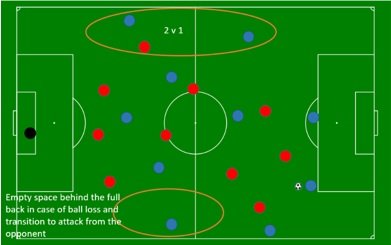
Highlighted here are the areas where opponents can damage a 3-4-3 (red) using a 4-3-3 (blue).
Nowadays there are a number of players that have made this role their own, but that has been down more so to the evolution of full-backs and what they are required to do.
In brief the cons are:
- Back 3 can be exposed through opposition attacks from wide areas or through switches of play.
- Challenging if playing against an opposition front 3, as no spare player to offer defensive support and cover.
- Susceptible to counter attacks if both central midfielders advance forwards.
- Space can be exploited in wide areas if wide players (forwards and midfielders) do not track back.
- Players to be tactically astute and aware to take up positions to control space on the pitch to the teams advantage.
During the build up
If a team manages to master the fundamentals of the system at a really high level, the options that they will have both in the attacking and defending phase will be numerous.
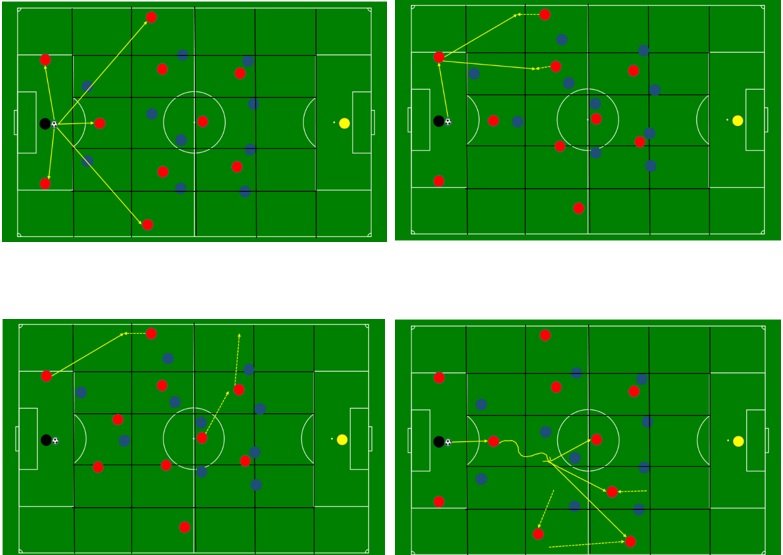
A traditional 3-5-2 (red) against a 4-4-2 (blue) with the sweeper (central defender) in the middle. A GK with god feet is a valuable weapon for a team due to the many available options for distribution.
When in possession, the sweeper would, in theory, be free to collect the ball in deep positions and move forward into the midfield zone to instigate attacks. The freedom and responsibility of the role meant that the sweeper was often the most gifted player on the team. A sweeper with impressive passing range, like it was David Luiz with Chelsea, by having him play direct balls high and wide to the wingbacks or forwards it is something that the majority of teams would find it difficult to defend. In bypassing the center of the field in this way, the defensive midfielders are less relied upon to be conduits for ball progression and instead can concentrate on ensuring that their team maintains possession in these high, wide zones by pressing and nipping counter-attacks in the bud.
Legendary German World Cup winner Franz Beckenbauer is the most famous example of a master sweeper — and even used the same tactic as coach of Die Mannschaft — while Carlos Bilardo coached Argentina to a World Championship in 1986 with a back three. Rinus Michels’ Netherlands, with Ronald Koeman as their spare man, conquered Europe in a similar manner in 1988.
David Luiz under Conte’s instructions had one of his best seasons playing as a sweeper and due to his exceptional ability with the ball in his feet help Chelsea a lot during the possession phase and the build-up phase.

During the attacking phase, due to the huge disadvantage on the wings, the team must be well trained to face a counter attack. The immediate press to the ball and also intelligent and quick defenders it more than necessary than any other system of play.
During the defending phase
The back 3 formation provides great versatility. The formation can change to back 3, back 4 or back 5 depending on the ball position, the team players and the opponents. Adopting a positional play methodology and train the players to move according to specific references, the ball, the teammates, and opponents, and also to use for training a pitch divided into 5 vertical zones, will assist the team to automate a lot of their movements in defense. The back line of 5 can cover successfully and with very little effort the width of the field. The team will probably lose from the depth but having players with great endurance and cable to cover a lot of space with balance.
A very defending approach is the transformation of a 3 – 4 -3 to a 5 – 4 -1 with the 2 wingers dropping to the midfield to protect the wide lines and avoid exposure to 1 v 2 situations.
The Barcelona success changed the scene
But toward the beginning of the new millennium, the back three had largely become a relic of a bygone era, rendered redundant by the proliferation of single-striker systems — namely 4-3-3 and 4-2-3-1. The huge success of Guardiola with Barcelona and the new ear of Positional Play and possession football, attract many coaches to use the 4 – 3 – 3, 4 – 2 – 3- 1 and other variations of these systems. Against teams with one center forward, a team with three center-backs will have two spare men in defense.
Aside from the odd and often unsuccessful exception, back threes were mostly unseen in top-level European soccer — at least outside of Italy, where they occasionally remained in use — for the better part of a decade.
In the previous years there were many teams who adopt a 4 – 4 -2 formation. That forced coaches to bring to the surface a formation with three center backs. The aim was to be able to face the two forwards.
Pep Guardiola’s use of a back three varies greatly from Conte’s. In his final season at Barcelona, the Catalan tactician switched to a version of 3-4-3 which included a diamond-shaped midfield to accommodate new signing Cesc Fàbregas. This would ordinarily mean that the side lacks width, but with Sergio Busquets dropping into the backline alongside Carles Puyol, Dani Alves, and Éric Abidal were able to bomb forward from wide defensive positions like they were used to when playing in a back four. That edition of Barcelona also occasionally employed a lopsided back three, with two traditional center-backs, plus usual left-back Abidal.
During his three-year spell in charge of Bayern Munich, Guardiola occasionally used a similar system to allow Thomas Müller to operate in a free role behind the front three. When doing this, midfielder-cum-defender Javi Martínez would act as the team’s sweeper; the Basque’s assured passing and confidence on the ball meant he could move forward and combine with the midfield when required. Later in Guardiola’s Bayern tenure, Jérôme Boateng became adept at playing this role as well.
With many managers de-emphasizing the importance of possession, back three-based formations have taken on new relevance for their counter-attacking potential. Wingbacks are able to quickly transition from defense to attack.
The potential for any team playing with a back 3 to be overloaded in wide areas is reduced. This is because the modern football players are much fitter than even 10 years ago. Many wingbacks would previously struggle to adequately undertake both their attacking and defensive duties for a full 90 minutes. In our days are much more capable to cover the ground needed to get up and down the touchline for an entire game.
Center-backs used to be powerful yet lumbering, but the modern defender is fast and agile. Center-backs used to be only strong but the modern defender is fast and technically skillful. Modern athletic central defenders are able to cover ground in a way that wasn’t previously possible. That means they are much more capable of closing down any space that should appear behind a running forward winger of center forward.
That’s not to say that a back three formation is invulnerable to coming unstuck out wide — that risk will always be there to some extent. But the greater proliferation of specialist defensive midfielders also mitigates against this. Ever since Claude Makélélé’s transfer ushered in an era of a disappointment for Real Madrid and one of great success for Chelsea back in 2003, almost every top side has sought to have a midfielder dedicated to defensive duties within their ranks. These specialists are masters of spotting danger and plugging gaps; in that regard, they are a wingback’s best friend.
Conclusion
Trends in football usually makes cycles. It is rare for a tactical concept to be new. Usually old solutions are adapted to answer new problems. Playing with a back 3 is no different. It was just moved away from the picture when possession was king. Probably many connected the formation with primarily defensive teams and behaviors. But today, many coaches prefer to emphasize the need to press, build from the back, and counter effectively. For that, playing with a back 3 can be a fantastic option.
Like every other tactical principle, playing with a back 3 have their flaws. But, in modern football, with defenders having acting role during the attack, the back three has found a new lease on life.

